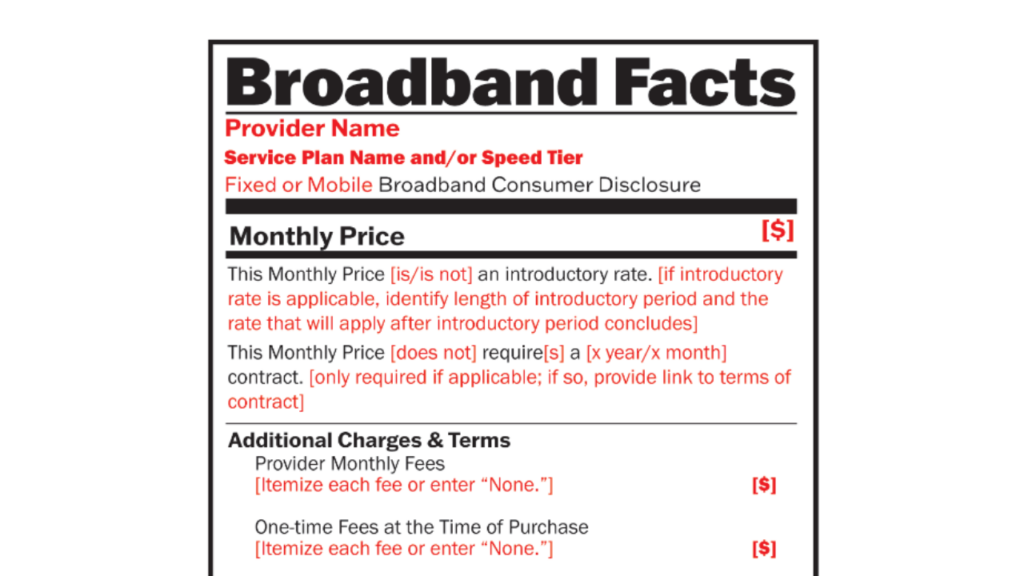After the FCC paused its efforts to establish consumer broadband labels for several months to address providers’ requests for changes, the labeling process appears to be moving forward again.

Impact: The labels, more colloquially known as “Broadband Nutrition Labels,” have progressed to the point where they’re under review from the Office of Management and Budget and will likely go into effect once the OMB signs off barring any additional delays or last-minute appeals from providers. But to get to this point, the FCC had to delay the process for several months to consider a variety of requests from providers to make the labeling requirements less onerous. The commission ultimately ended up rejecting most of the suggested improvements, however, opting for as much transparency as possible.
Per the FCC, the labels have been designed to provide consumers with additional details around broadband pricing, speed, and reliability to help them make more informed decisions. In a statement Chairwoman Jessica Rosenworcel said, “Every consumer needs transparent information when making decisions about what Internet service offering makes the most sense for their family or household.” Once the rules go into effect with transparency as a baseline, providers will need to itemize any fees they pass along to consumers, something they were trying to prevent with their requests for simplification.
Among the requests was one from industry group ACA Connects, which represents smaller cable providers, that requested the FCC allow providers to use the much broader phrase “additional fees may apply” to cover any added fees rather than having to list each individual fee out on labels. But the FCC rejected that request for its lack of transparency, with Rosenworcel noting that unexpected fees are at the heart of what the labels are designed to prevent. The goal of the labels, adopted as part of the 2021 infrastructure law, aims to provide consumers with a clear view of what they’re paying for and enable them to more easily compare plans among providers.
While the FCC was less than receptive to most of the provider-suggested changes, it did acquiesce to a few suggestions. It accepted the ACA Connects request also signed onto by the NCTA-the Internet and Television Association to relax the rules around record-keeping requirements. Another change requested by wireless association CTIA will allow providers to use the term “taxes included” if their pricing already includes taxes. And providers operating in the FCC’s E-Rate and rural healthcare programs don’t have to come up with enterprise and special access service labels. Overall, however, the changes to the guidelines the FCC put out last November were minimal. Once OMB approves the revised rules, broadband providers with more than 100,000 lines will have six months to implement the labels, while those with fewer than 100,000 will have a full year to get their labels prepped and ready.
